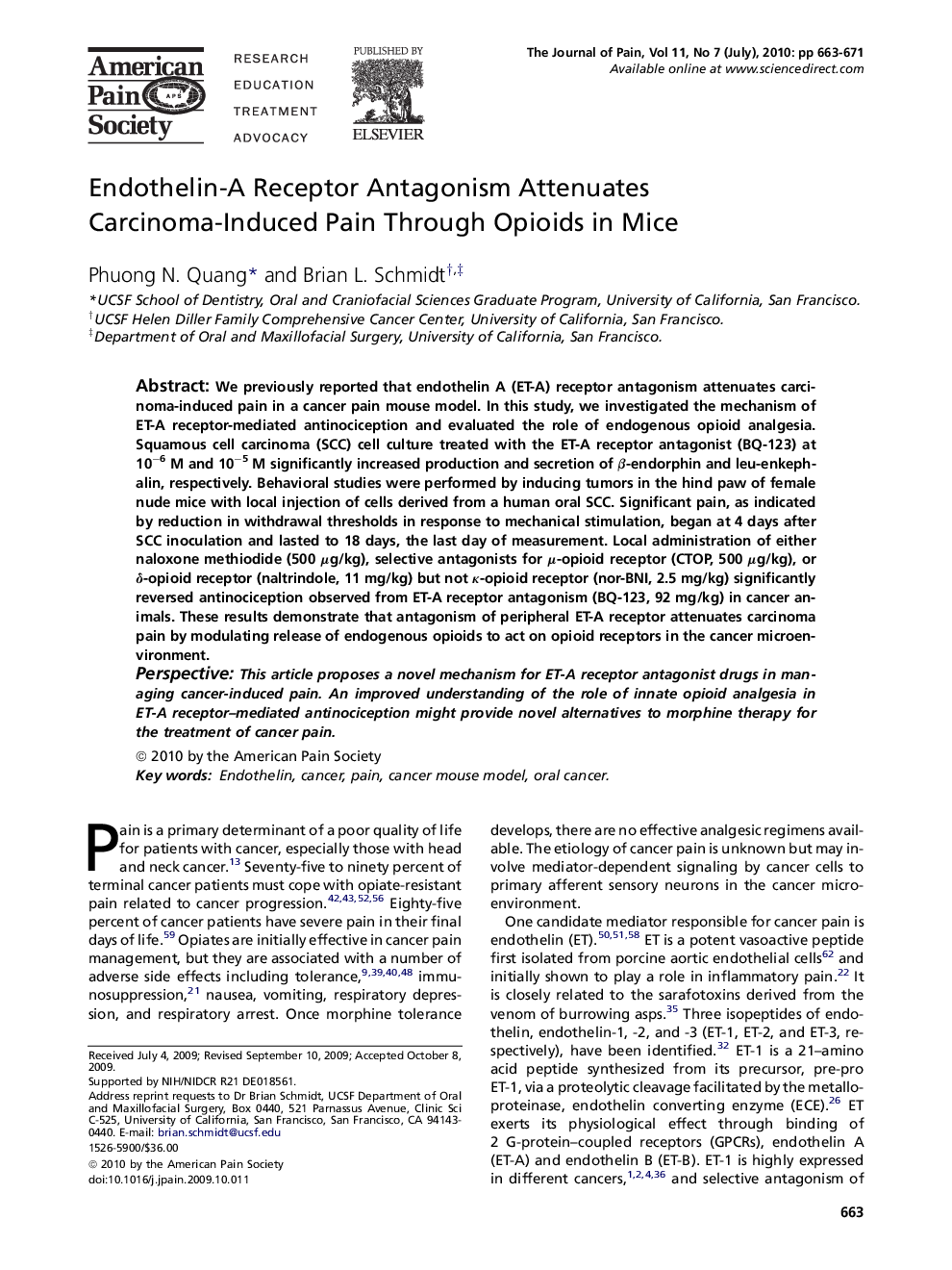| Article ID | Journal | Published Year | Pages | File Type |
|---|---|---|---|---|
| 2732572 | The Journal of Pain | 2010 | 9 Pages |
We previously reported that endothelin A (ET-A) receptor antagonism attenuates carcinoma-induced pain in a cancer pain mouse model. In this study, we investigated the mechanism of ET-A receptor-mediated antinociception and evaluated the role of endogenous opioid analgesia. Squamous cell carcinoma (SCC) cell culture treated with the ET-A receptor antagonist (BQ-123) at 10−6 M and 10−5 M significantly increased production and secretion of β-endorphin and leu-enkephalin, respectively. Behavioral studies were performed by inducing tumors in the hind paw of female nude mice with local injection of cells derived from a human oral SCC. Significant pain, as indicated by reduction in withdrawal thresholds in response to mechanical stimulation, began at 4 days after SCC inoculation and lasted to 18 days, the last day of measurement. Local administration of either naloxone methiodide (500 μg/kg), selective antagonists for μ-opioid receptor (CTOP, 500 μg/kg), or δ-opioid receptor (naltrindole, 11 mg/kg) but not κ-opioid receptor (nor-BNI, 2.5 mg/kg) significantly reversed antinociception observed from ET-A receptor antagonism (BQ-123, 92 mg/kg) in cancer animals. These results demonstrate that antagonism of peripheral ET-A receptor attenuates carcinoma pain by modulating release of endogenous opioids to act on opioid receptors in the cancer microenvironment.PerspectiveThis article proposes a novel mechanism for ET-A receptor antagonist drugs in managing cancer-induced pain. An improved understanding of the role of innate opioid analgesia in ET-A receptor–mediated antinociception might provide novel alternatives to morphine therapy for the treatment of cancer pain.
